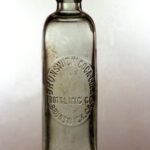People love passing along urban legends, regardless of any truth (or lack thereof) that may exist in them. The more bizarre or scary a legend, the more interesting it becomes to us. Strangely enough, some urban legends are actually true, or at least based on a true event.
Coca-Cola lovers exist around the world, and they seem to love telling each other the urban legend that their favorite soft drink once contained cocaine. This may seem like a typical urban legend – why would anyone put drugs in soda? – but in this case the legend is true. In 1855 the soda was named for its ingredients: kola nuts and extract of coca leaves (basis of cocaine). The original amount of coca leaves included in the recipe is not known, but by 1902 the amount was 1/400 of a grain of cocaine per ounce of syrup. By 1929, the recipe was cocaine free.
A lesser-known urban legend tells the story of a student funding college through soliciting one cent donations. The idea seems laughable to some, but in this case someone successfully did this. In 1987 Mike Hayes, a University of Illinois student, wrote to the Chicago Tribune about his idea for financing college. Writer Bob Greene wrote the story, including the request for readers to send one cent for Hayes’ college fund. Less than a month later the fund had grown to the equivalent of 2.3 million pennies (many people sent more than a penny). Hayes eventually collected enough money to pay for college and graduated, providing a source for this urban legend.
People may have heard the urban legend of a golfer dying after chewing on a golf tee. Again, this event seems absurd but actually happened once. In 1982 Navy Lieutenant George M. Prior became increasingly ill after chewing on a golf tee at the Army-Navy Country Club in Arlington, VA. It turned out that Daconil, a pesticide, was sprayed on the course twice a week and ended up on the golf tee after being used to tee-off. Lt. Prior had a severe allergic reaction and ten days later died of organ failure, along with 80% of his body being burned. His widow filed a $20 million suit against manufacturer Diamond Shamrock Chemical Company, and the case was settled out of court. This story has also become urban legend, warning people of the dangers of ingesting pesticides.
Urban legends can also center on horrific injuries that people miraculously survive. The truth is that many people do somehow survive severe injuries, often involving head trauma. One such urban legend mystifies listeners as they hear that someone survived a large drill bit piercing their head. In the summer of 2003, construction worker Ron Hunt fell off a ladder, and landed on a drill (which was turned off). The 18 inch long, 1.5 inch diameter drill bit went through his right eye and out the side of his head. Hunt survived with no brain damage. The drill bit somehow pushed the brain out of its way rather than going through it. Hunt did, however, lose his eye and had to have 2 titanium plates to repair damage to his skull. This is a modern day example of truth behind an urban legend, but there is another case in which someone survived a similar injury. In 1848 Phineas Gage had an accident and ended up with a 3’7″ stamping iron go through his cheekbone and out the top of his head. Gage lived for almost 12 years, but exhibited dramatic changes in personality and, during his final months, had epileptic seizures.
There are countless other urban legends, each with variations based on location and/or culture. Whether they are true or not, we seem to love telling them, because many have existed for decades or hundreds of years. An excellent website, www.snopes.com, offers explanations for just about any urban legend you can think of. The researchers for the site research each legend, determining if there are any truthful events behind the legends. Not surprisingly, they find most urban legends to be false or of indeterminate origin. When one is found to be true, they do a good job of documenting sources and explaining the truth behind the urban legend.




